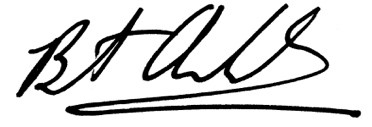Editor’s Message
[1] Greetings all, and welcome to Volume 29, Issue 1 of Music Theory Online! The first thing I would like to do as Incoming Editor is express my appreciation for the work of the small but mighty army of scholars who keep the lights on at MTO, delivering these regular batches of the highest quality scholarship. Additionally, I would like to offer special thanks to Outgoing Editor Mitch Ohriner for the generous support and wise guidance he has steadfastly provided to me at all stages of my involvement with this journal. His kind, effective, and transformative leadership will never be matched, and, for that and countless other reasons, he will very much be missed!
[2] As for the new contributions to music theory we are placing online, I’ll note that the five research articles featured in this issue tread fantastically varied grounds. Even so, they complement each other brilliantly, almost as if they had been hand-selected for a colloquium titled, “Expert Analytic Techniques Applied to Diverse Stylistic Targets.”
[3] First up is a foray into narrative theory and film music. Brian Edward Jarvis’s article, “Prioritizing Narrative Structure in Large-Scale Film-Music Analysis: A Case Study of Dramatic Irony in Barton Fink,” extends classic tools for narrative analysis from Freytag and Chatman and then applies them to film music. Jarvis collates the sonic and dramatic events in Barton Fink in a set of detailed, interactive multi-media timelines; in doing so, he illuminates new sources of dramatic irony, an element key for comprehending this notoriously opaque film. Next is Megan Lavengood and Evan Williams’s “The Common Cold: Using Computational Musicology to Define the Winter Topic in Video Game Music.” The authors of this article detail the process by which they compiled a vast dataset of winter-themed video game music examples and developed novel techniques to analyze it. Their work results most immediately in the discovery of commonalities in a specific genre of video game music that also, in many cases, informs our understanding of winter and Christmas music, more generally. Equally importantly, their work advances a new model for working with topics, one that bolsters traditional approaches with an increased reliance on informatics.
[4] In “Talking Scores and the Dismediation of Music Notation,” Floris Schuiling investigates a little-known, recording-based technology from the Netherlands created to help visually impaired musicians learn new pieces. After relating insights gained from speaking with the originators of talking scores, Schuiling gives a fascinating account of his own experience learning to play a piece via a talking score. This background and account continues a critical current dialog on the interrelationships of notation, media infrastructures, and (dis)ability. James Sullivan’s article, “Extending the Parallel Multiple-Analysis Processor: Perceived Meter in Post-Tonal Music” marks an important entry in the field of cognitive modeling. Taking Danuta Mirka’s powerfully flexible PMAP process as a starting point, Sullivan posits new methodological extensions of it. The new techniques treat meter processing, first, in non-isochronous contexts and, second, in contexts where multiple meters in separate perceptual streams compete for listener attention. At the same time that Sullivan’s methods shore up some unresolved theoretical aspects of PMAP, they shed new light on the metric effects present in African drumming patterns and in pieces by Carter, Babbitt, Feldman.
[5] Xieyi (Abby) Zhang’s “Between Half and Perfect Cadences: The Modulating Antecedent in Dvořák’s Parallel Periods,” offers a rich extension to form theory. Specifically, the author’s close readings of themes from Dvořák’s chamber music yields awareness of novel dynamic forces contributing to the requisite weak-strong phrase condition for periods that manifest even when the antecedent—a modulating antecedent, to be precise—closes with a perfect authentic cadence. As such, Zhang’s analyses shed light both on Dvořák’s compositional strategies, writ small and large, and on more global, oft-overlooked form-establishing concerns such as hierarchies of cadential strength.
[6] Alongside the five research articles, this issue includes reviews of two important new publications. The first, by David Heetderks, evaluates David Temperley’s Musical Language of Rock. This book, long in development and highly expansive in scope, has quickly risen to prominence and will likely remain a touchstone reference on rock music for years to come. The second review by John Link assesses Laura Emmery’s Elliott Carter Speaks: Unpublished Lectures. For any interested in learning what this composer had to say in his 1967 University of Minnesota lecture series (but who lack access to the Basel archive in which the recordings are housed), Emmery’s book, along with this review, will make for an essential pair of readings.
[7] It is our sincere hope that you, the readers, take as much enjoyment partaking in and learning from this issue as we, the editors, authors, board, and staff had putting it together. Happy spring to all, and best wishes for a season of growth and inspiration!

Brent Auerbach, Editor-in-ChiefUniversity of Massachusetts Amherst